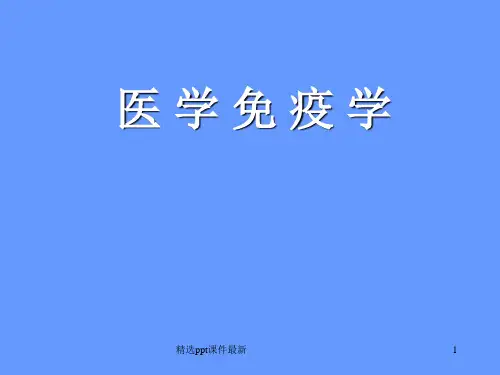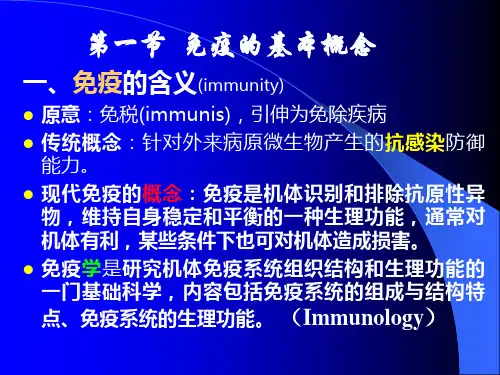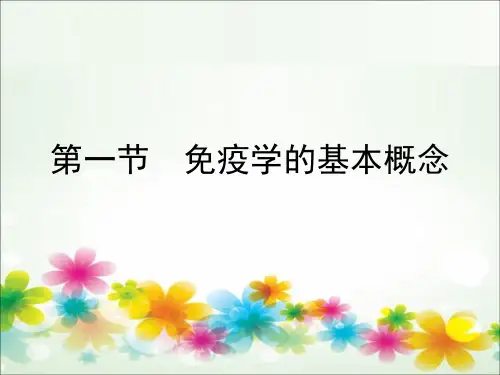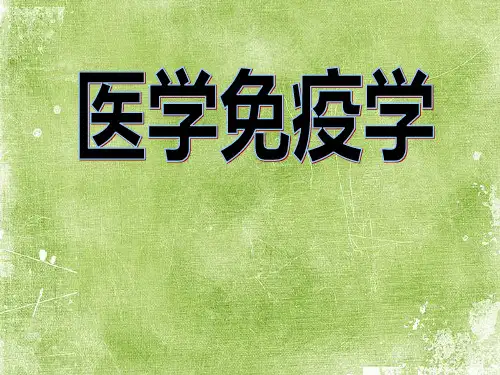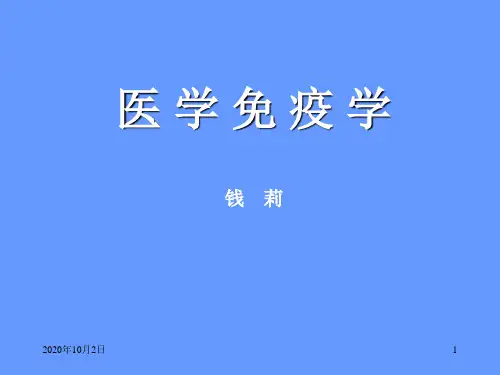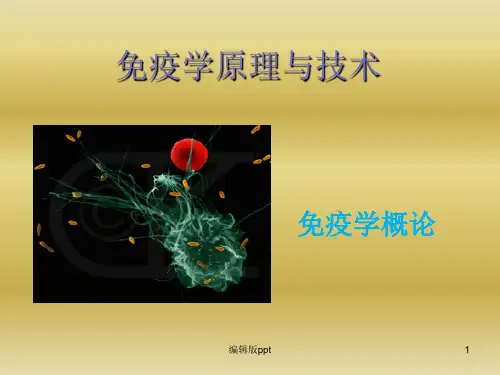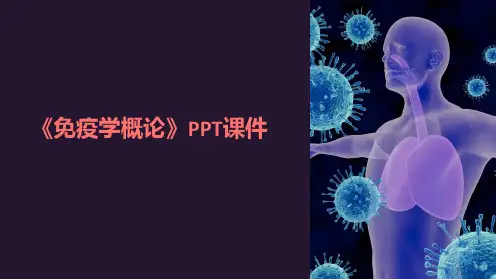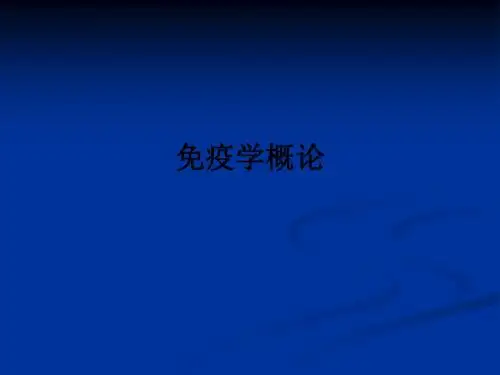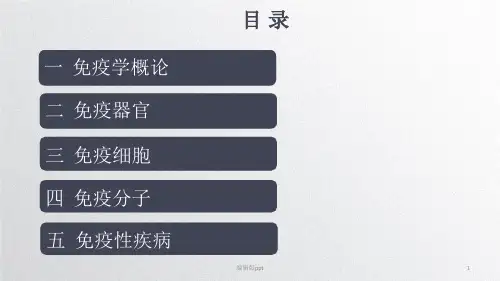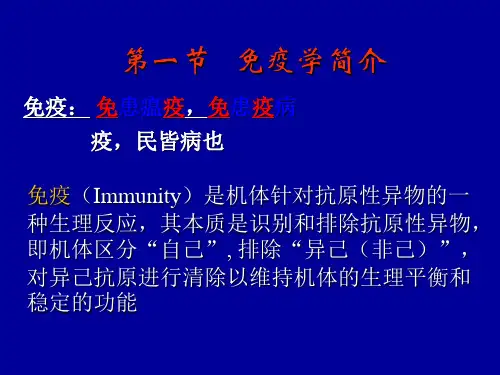①免疫器官、组织 ②免疫细胞 ③免疫分子
6
7
免疫细胞、免疫分子举例
8
免疫细胞、免疫分子举例
9
(2)免疫系统的功能
①免疫防御
-防止细菌、病毒等病原体的侵入。
-清除已经侵入机体的病原体。
②免疫监视
-清除损伤、衰老细胞。
-发现、清除变异细胞。
③免疫自稳
-免疫调节。
-免疫耐受。
10
二、免疫应答类型及其特点
=获得性免疫系统(aquired immunity system) =特异性免疫系统(specific immune system)
18
㈡ 对免疫应答的认识逐渐完善
-免疫细胞识别抗原的活化、增殖、分化。
-免疫应答产生的生理性和病理性效应。
-免疫耐受概念的提出。 -抗原提呈的机制。
19
第三节 免疫学展望
23
•1897, Paul Erhlich (German):
--Side-chain theory --The Authority of humoral immunity theory. --Nobel prize (1908).
•1898, Bordet (Belgian): --Complement. --Nobel prize (1919). •1901, karl Landsteiner (USA-Austrian): --Found ABO groups. --Hapten and Ag structure. --Nobel prize (1930).
--Idiotypic network. --Nobel prize (1984).
•1987, Tonegawa: --Ig and TCR gene VDJ recombination. --Nobel prize (1987).
